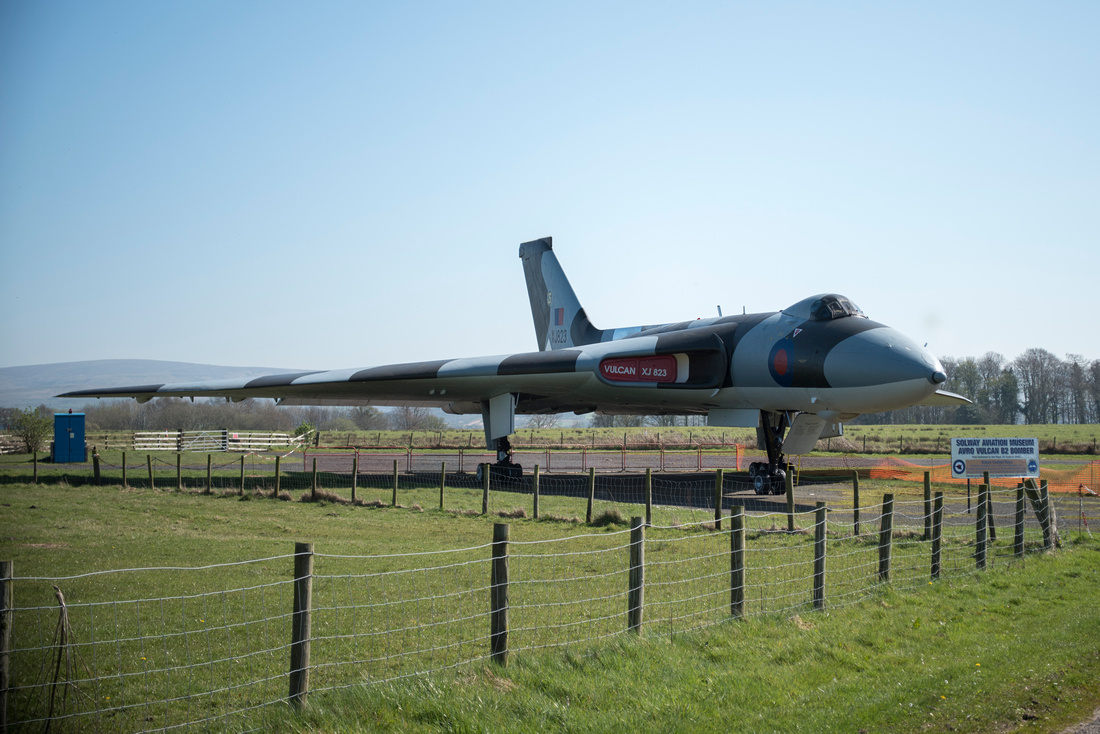Cold War Britain
After the 2nd World War, it's fair to say that Britain started building some great machines. The Likes of MG and Jaguar were really adding some style to British roads but this seems to pale into insignificance when compared with the Vulcan Bomber. An aircraft that was designed to fly higher, faster and deliver a devastating payload. This Nuclear deterrent was primed and ready to go. The 4 or 5-man crew had to be airborne within 90 seconds for Britain to be able to respond the early warning system that indicated a nuclear attack from the USSR and they practiced the drill over and over. Capable of cruising at 60,000 feet, just under the speed of sound, the design of the aircraft was to fly above radar and out of range of surface to air missiles. These capabilities are still respectable by today's standards, although now, air-defence systems are much more capable of deterring attacks of this type. Now, I had no idea about any of this until an engaging and knowledgeable guide took me on a tour.
The undercarriage was designed to take a payload of up to 40 regular bombs to take out things like runways, or deliver 1 nuclear weapon.

 The sleek lines of one of the first production delta-wing aircraft were a feat of engineering techniques of the time.
The sleek lines of one of the first production delta-wing aircraft were a feat of engineering techniques of the time.



 Sitting in the cockpit, Roy explains the roles of the 4/5 crew-members, the technology they used and also a bit about their lifestyle. The smell and atmosphere of sitting there, listening to him recount the processes they went through really brought it to life. One of the very poignant moments that stuck with me is that when the crews boarded these planes to deliver a nuclear weapon, they'd be pretty much on a one-way flight. Even if they did make it back (the planes were designed to carry enough fuel to get to the USSR and back), they'd be coming back to total devastation and nuclear fallout.
Sitting in the cockpit, Roy explains the roles of the 4/5 crew-members, the technology they used and also a bit about their lifestyle. The smell and atmosphere of sitting there, listening to him recount the processes they went through really brought it to life. One of the very poignant moments that stuck with me is that when the crews boarded these planes to deliver a nuclear weapon, they'd be pretty much on a one-way flight. Even if they did make it back (the planes were designed to carry enough fuel to get to the USSR and back), they'd be coming back to total devastation and nuclear fallout.



 One thing that did strike me is that the windows were very small, this was due to the pressure they'd be subject to, flying at high altitudes. They also had built-in heavy-duty blinds to block out the blinding and debilitating light-flash which is the initial output from a nuclear explosion. Many of the initial Vulcans were painted in Flash White to reflect this and the heat, that rapidly followed. Although this was a 'fly-by-wire' aircraft, the dials and and gauges were straight out of a Lancaster Bomber.
One thing that did strike me is that the windows were very small, this was due to the pressure they'd be subject to, flying at high altitudes. They also had built-in heavy-duty blinds to block out the blinding and debilitating light-flash which is the initial output from a nuclear explosion. Many of the initial Vulcans were painted in Flash White to reflect this and the heat, that rapidly followed. Although this was a 'fly-by-wire' aircraft, the dials and and gauges were straight out of a Lancaster Bomber.
Included in it's capability is a ground radar system, which enabled it to fly just 50 feet from the ground when needed. The planes were in service between 1956-1985. This one is at the Solway aircraft museum in Cumbria and is worth a visit.
Comments
|
(3)
January (3)
February
(1)
March (1)
April
May
June
July
August
(2)
September (2)
(2)
October (2)
(1)
November (1)
(2)
December (2)
|
(2)
January (2)
(1)
February (1)
March
(1)
April (1)
(2)
May (2)
June
July
August
September
October
November
December
|
January
February
March
April
May
June
July
August
September
October
November
December
|
(1)
January (1)
February
(1)
March (1)
April
May
June
July
(1)
August (1)
(1)
September (1)
(1)
October (1)
(1)
November (1)
(1)
December (1)
|
(1)
January (1)
February
(1)
March (1)
April
May
(1)
June (1)
July
August
(1)
September (1)
October
(1)
November (1)
December
|
January
(1)
February (1)
(1)
March (1)
April
(1)
May (1)
June
July
August
September
October
November
December
|
January
February
March
April
May
June
July
August
September
October
November
December
|
January
February
March
April
May
June
July
August
September
October
November
December
|
January
February
March
April
May
June
July
August
September
October
November
December
|
January
February
March
April
May
June
July
August
September
October
November
December
|
January
February
March
April
May
June
July
August
September
October
November
December
|
January
February
March
April
May
June
July
August
September
October
November
December
|
January
February
March
April
May
June
July
August
September
October
November
December
|
January
February
March
April
May
June
July
August
September
October
November
December
|
